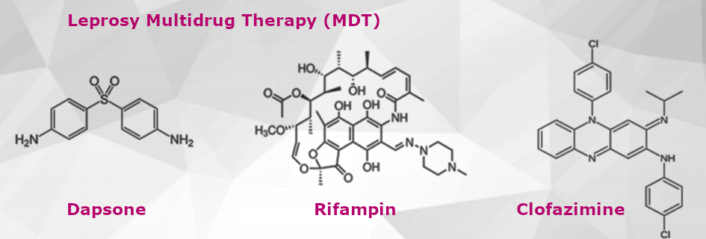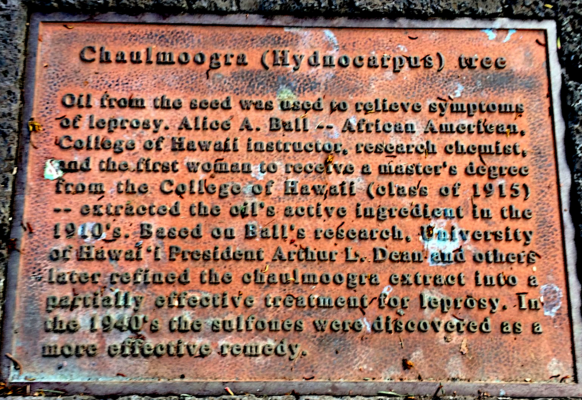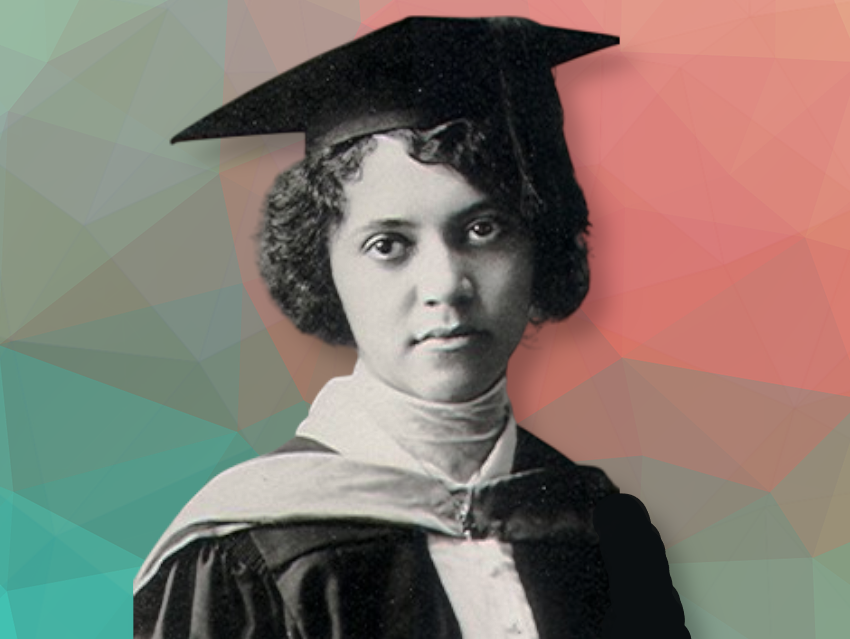As the first woman and first African American Alice Ball gained a master’s degree from the University of Hawaiʻi in Mānoa, Honolulu, HI, USA, where she also became the first female and African American chemistry teacher at the age of 23. She died at age 24, and her contributions to science were not recognized until many years after her death.
In the early 20th century, there was significant gender and racial bias in science. Among her contemporaries were Clara Immerwahr (first woman to be awarded a Ph.D. in chemistry in Germany), Lise Meitner (made important contributions to nuclear chemistry), Lili Wachenheim (the first female chemist to do research in a BASF laboratory), Dorothy Hodgkin (pioneered the study of biomolecules by X-ray crystallography, 1964 Nobel Prize in Chemistry).
1 Life
Alice Augusta Ball was born on July 24, 1892 in Seattle, WA, USA. In 1902, her family moved to Honolulu, HI, USA, and back to Seattle in 1905. She studied chemistry at the University of Washington, Seattle, earning a bachelor’s degree in pharmaceutical chemistry in 1912, and a second bachelor’s degree in the science of pharmacy in 1914.
Together with her lecturer Williams Dehn, she published an article entitled “Benzoylations in Ether Solution” in the Journal of the American Chemical Society in 1914 [1]. Publishing an article in a prestigious scientific journal was an unusual achievement for a woman at the time, especially for a black woman.
Alice Ball received scholarship offers from the University of California Berkeley, USA, and the College of Hawaii (now the University of Hawaiʻi) and decided to study for a master’s degree in chemistry at the latter. In 1915, she was the first woman and first African-American to earn a master’s degree there. In her master’s thesis, “The Chemical Constituents of Piper methysticum; or The Chemical Constituents of the Active Principle of the Ava Root”, she investigated the chemical properties of the kava plant species (Piper methysticum). This plant, which is native to Oceania and widespread throughout Polynesia, was used to treat anxiety, headaches, kidney disorders, and other hyperactive disorders.
Harry T. Hollmann, an assistant surgeon at the U.S. Public Health Service Leprosy Investigation Station in Hawaii, contacted her due to her expertise to investigate the chemical properties of chaulmoogra oil. For centuries, chaulmoogra oil had been the most effective treatment available for leprosy. Alice Ball developed an injectable leprosy cure from the oil of chaulmoogra tree. Her method was used 30 years.
2 Leprosy
2.1 The Disease
At the time, leprosy was a highly stigmatized disease with little chance of a cure. From 1866 to 1969, more than 8,000 leprosy sufferers were exiled to the Hawaiian island of Molokai on the Kalaupapa peninsula. The Native Hawaiians had no acquired immunity and were particularly susceptible to leprosy.
Leprosy is a chronic infectious disease with a long incubation period, caused by the bacteria Mycobacterium leprae or Mycobacterium lepromatosis. It manifests with notable changes to the skin, mucous membranes, nerve tissue, and bones. Transmission requires prolonged close contact with an infected person and occurs via droplet infection. The bacterium was first identified under a microscope in 1873 by Norwegian scientist Gerhard Armauer Hansen, after whom the disease is also known as Hansen’s disease. As the disease progresses, the sense of touch diminishes until the patient can no longer feel anything. This often leads to severe injuries, which in turn result in further mutilations.
Chaulmoogra oil, extracted from the seeds of the Hydnocarpus wightianus tree native to the Indian subcontinent, was the best available treatment for leprosy and had been used since the 1300s. However, the Western method of treatment developed by the British physician Frederic John Moaut in 1854 was not very effective. The oil was too sticky for applying it directly on the skin, it clumped under the skin when injected, and caused blisters instead of being absorbed. Ingesting the oil was also ineffective due to its unpleasant taste, which often led to vomiting.
2.2 The Ball Method
In 1916, Alice Ball developed a method – later called Bell Method – to make the oil injectable and water-soluble.
First, she saponified the fatty acids to form chaulmoogric acid (13-[(1S)-Cyclopent-2-en-1-yl]tridecanoic acid). Saponification is a chemical reaction in which fatty acids (the building blocks of oils and fats) react with a base, like sodium hydroxide, to form a soap (in this case, a type of fatty acid salt). This step helped isolate the active therapeutic component, chaulmoogric acid, in the oil.
Next, she transformed the resulting chaulmoogric acid into its ethyl ester, producing a substance that retains the oil’s therapeutic properties while being more stable in an aqueous suspension. This allowed the substance to be injected more easily into the body and absorbed effectively.

She became the first woman and first African-American offered an instructor position in chemistry at the College. Her method was used to develop therapies to treat leprosy patients until the 1940s. While not curative or able to fully halt the disease’s progress indefinitely, the isolated ethyl ester remained the only available, effective treatment for leprosy until sulfonamide drugs were developed in the 1940s. However, credit went for a long time to somebody else.
But first, a brief look at the treatment of leprosy:
The development of antileprosy drugs began with Promin, a sodium glucosulfone (diamino-azobenzene 4’-sulfonamide) introduced in 1943. It was followed by a more effective oral sulfone, Dapsone (4,4’-diaminodiphenylsulfone) in the 1950s, and Clofazimine [3-(p-chloroanilino)-10-(p-chlorophenyl)-2,10-dihydro-2-(isopropylimino) phenazine] and Rifampin, a rifamycin derivative, (3-(4-methyl-1-piperazinyl)-imino-methylrifamycin) in the 1960s and 1970s. However, acquired resistance to these drugs was observed when they were used as a monotherapy. In 1981, the WHO recommended multi-drug therapy (MDT) using all three drugs, which remains the standard treatment today [2].

3 Sudden Death
Alice Ball died before she could publish her technique. She died on December 31, 1916, at the age of 24.
The exact cause of her death is not known, as her original death certificate was altered to list tuberculosis as the cause. Some sources suggest she may have contracted chlorine poisoning during a demonstration on the proper use of a gas mask, which was held in response to World War I. Alice Ball worked under extreme pressure to produce injectable chaulmoogra oil and, according to some sources, exhausted herself in the process.
4 Late Credit
Arthur L. Dean, Alice Ball’s graduate study advisor at the University of Hawai’i, dean of the college, and later president of the university, in 1919 produced large quantities of the injectable chaulmoogra extract in a college chemistry laboratory. In 1922, he published what he then called the “Dean Method” after himself without giving credit to Alice Bell for her work for extracting the active ingredient in chaulmoogra oil [3].
Over time, however, researchers began to learn of Ball’s crucial contribution. Ball’s colleague Harry Hollmann tried to correct the misconception about the development of the extract and published a paper in 1922 giving credit to Ball and calling the injectable form of the oil the “Ball method” [4]. Hollmann compared Dean’s and Ball’s techniques in the article and failed to see that Dean had made any improvement over Alice Ball’s original technique.
In the 1970s, Kathryn Takara and Stanley Ali, professors at the University of Hawaiʻi, found records of Ball’s research and made efforts to have her achievement recognized. In the 1990s, Stanley Ali came across The Samaritans of Molokai, a 1932 book that specifically mentioned and acknowledged the contributions of a young chemist. She was later identified as Alice Ball.
After the work of many historians at the University of Hawaiʻi, the university finally honored Alice Ball in 2000 by dedicating a plaque to her on the school’s only chaulmoogra tree and recognizing Alice A. Ball as one of its most distinguished alumni. Other honors and awards as well as Alice Ball Days followed, but unfortunately all came years after her death.

References
[1] William M. Dehn, Alice A. Ball, BENZOYLATIONS IN ETHER SOLUTION, J. Am. Chem. Soc. 1914, 36(10), 2091–2101. https://doi.org/10.1021/ja02187a015
[2] E. Cambau, D. L. Williams, Chapter 5.2. Anti-leprosy Drugs: Modes of Action and Mechanisms of Resistance in Mycobacterium leprae, In International Textbook of Leprosy (Eds: D. M. Scollard, T. P. Gillis), American Leprosy Missions, Greenville, SC, USA, 2019. https://doi.org/10.1489/itl.5.2
[3] Arthur L. Dean, Richard Wrenshall, FRACTIONATION OF CHAULMOOGRA OIL, J. Am. Chem. Soc. 1920, 42(12), 2626–2645. https://doi.org/10.1021/ja01457a022
[4] HARRY T. HOLLMANN, THE FATTY ACIDS OF CHAULMOOGRA OIL IN THE TREATMENT OF LEPROSY AND OTHER DISEASES, Arch. Derm. Syphilol. 1922, 5(1), 94–101. https://doi.org/10.1001/archderm.1922.02350260097010
Sources
- Miles Jackson, Alice Augusta Ball (1892–1916), BlackPast.org September 20, 2007. (accessed November 26, 2024)
- Miles M. Jackson, They Followed the Trade Winds, African Americans in Hawai’i, SocialProcess in Hawai’i, Department of Sociology, University of Hawai’iat Manoa, Honululu, HI, USA, Vol. 43, 2004, p. 168–174. ISBN 0-8248-2965-4
- Beverly Mendheim, Lost and Found: Alice Augusta Ball, an Extraordinary Woman of Hawai`i Nei, Northwest Hawaii Times, September 2007. (accessed November 26, 2004)


